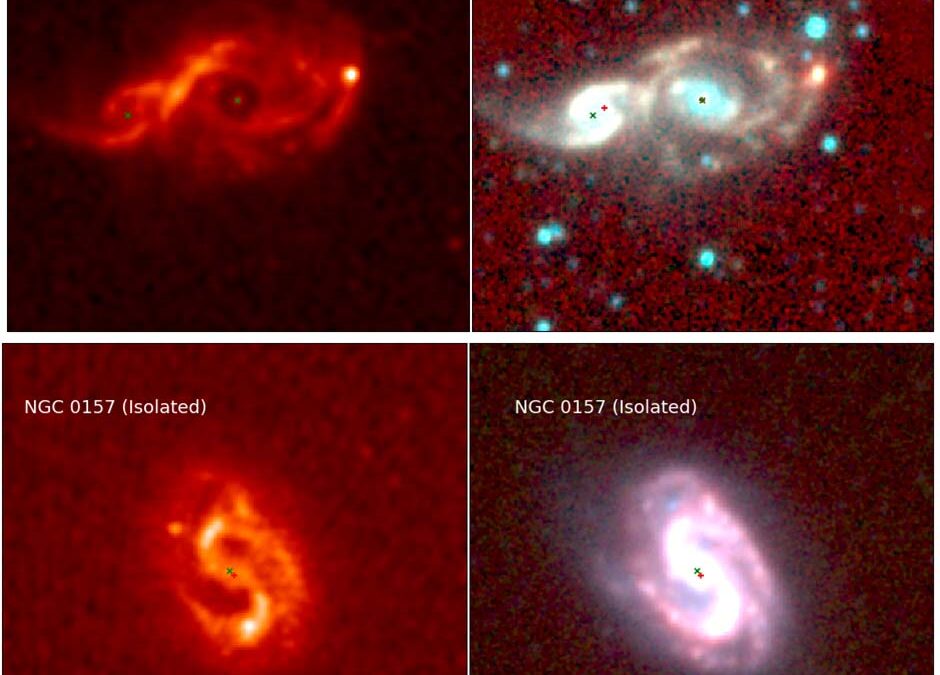A new University of Cape Town (UCT) study published in the Monthly Notices of the Royal Astronomical Society journal has shed fresh light on the classic connection between infrared and radio light in galaxies.
Led by Malebo Moloko, a PhD candidate in Astronomy at UCT, the research is titled “Probing the Infrared/Radio correlation of the full IRAS Revised Bright Galaxy Sample with MeerKAT and the VLA”. It explores how galaxies’ glow in infrared light is linked to their powerful radio emissions, using cutting-edge data from South Africa’s MeerKAT radio telescope and the United States’ Very Large Array (VLA).
Stars are born in dense clouds of dust and gas. The most massive stars heat up their surroundings, making the dust shine in infrared light. Later, when these stars explode as supernovae, their remnants accelerate electrons to near-light speeds, producing synchrotron radiation observable at radio wavelengths. This physical chain of events underpins the famous infrared–radio correlation: a cosmic rule of thumb connecting star formation to radio emission.
Just as social perceptions of relationship statuses vary, galaxies also have distinct stages – some are isolated (single), while others interact or merge (in a relationship). The team’s study focused on the Infrared Astronomical Satellite (IRAS) Revised Bright Galaxy Sample, a cornerstone catalogue of nearby luminous galaxies, to ask: how do galactic interactions affect the infrared–radio emission connection?
Thanks to MeerKAT’s excellent resolving power, the team could distinguish individual components in some of the interacting galaxies in their sample. However, separating isolated and merging galaxies was challenging.
“In some cases, galaxies were already in advanced stages of merging, making it impossible to distinguish their individual properties,” says Moloko.
The team found that interacting galaxies tend to show a weaker infrared–radio correlation and greater scatter compared to isolated galaxies. This suggests that interactions drive extra radio emission and heightened star formation activity, reshaping the balance astronomers often rely on to measure how galaxies evolve.
“By combining MeerKAT and VLA data, we were able to build a large and robust sample to test this correlation in unprecedented detail. This helps us understand not only how galaxies form stars, but also how cosmic interactions stir up the energy we observe across the spectrum,” says Moloko.
Because astronomers can’t run lab experiments on galaxies billions of light-years away, the infrared–radio correlation is a critical tool. “It allows us to estimate star formation rates, even in dusty systems invisible to optical light. But if interactions systematically skew this correlation, ignoring them could cause overestimates of star formation across the universe.”
This study would need to be confirmed using a larger sample, and methods should be developed to compensate for the effects of galaxy interactions, especially important for more distant galaxies. Addressing these open questions will help refine the infrared–radio correlation as a reliable tool for measuring star formation across cosmic time.
“What excites me most is that these findings show the power of using multi-wavelength observations to disentangle the complex interplay of galactic processes,” Moloko adds.
Featured picture: Highlighting the distinction between isolated and interacting/merging galaxies. The left panel shows the MeerKAT radio image, and the right panel shows the corresponding WISE mid-infrared RGB image.
Photos: Supplied

